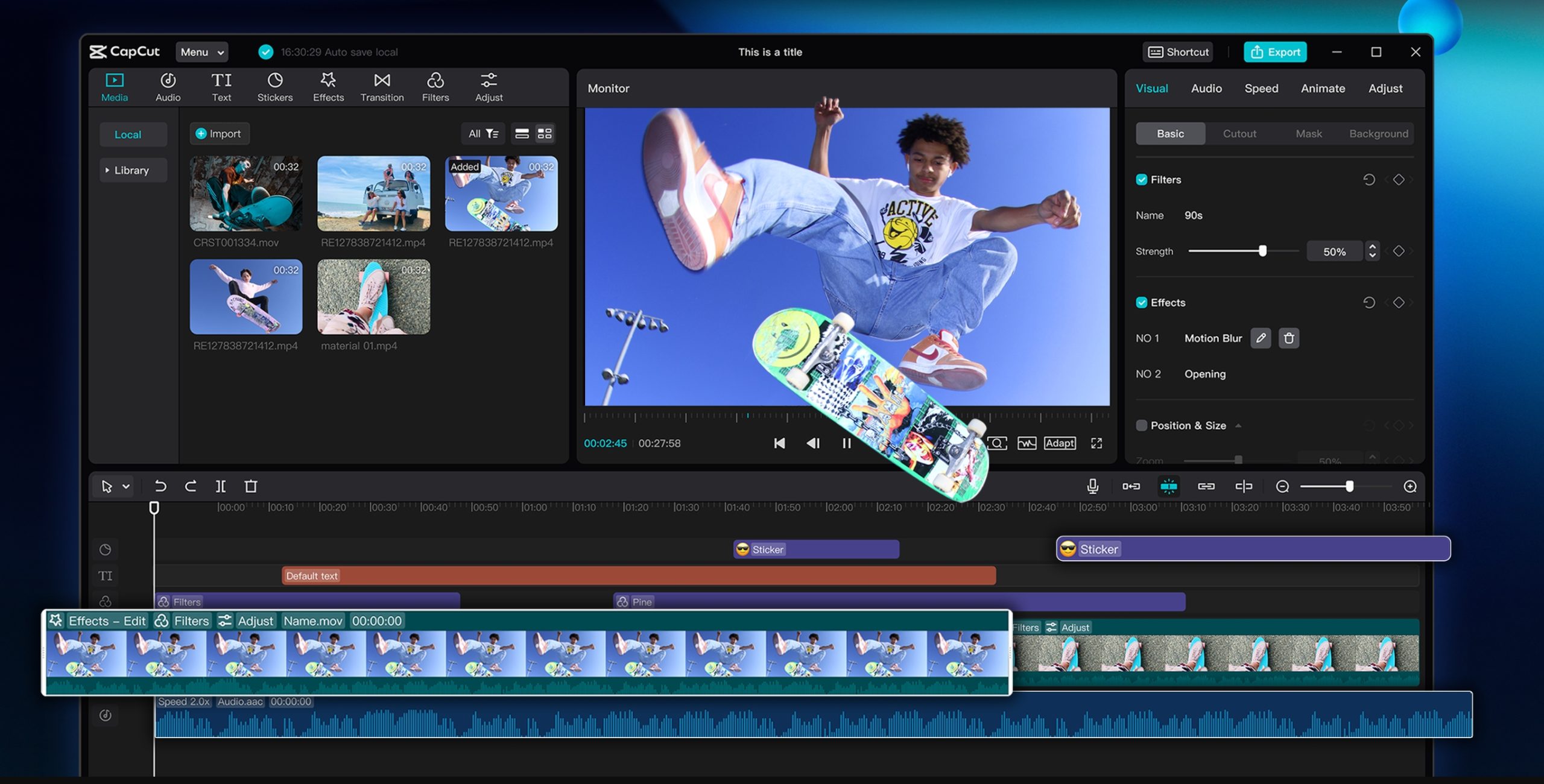
Sound design is perhaps the most underappreciated part of video editing, but it’s generally the most critical when it comes to engaging the viewer. Whether you’re creating a vlog, tutorial, marketing video, or short film, knowing how to balance a voice track and background music harmoniously can be the difference between success with your video and catastrophe. Background music, when done well, sets the tone and adds to the mood, and the voice track guides the viewer and delivers the message. The trick is to get them to play harmoniously together without drowning each other out. With CapCut Desktop—a free, full-featured video editor—this is simple to do and gratifying. CapCut Desktop Video Editor has been an invaluable choice for creators simply because it’s free and accessible, but also because it has a very intuitive design and an abundance of features.
One of the most convenient features that it offers is the ability to combine multiple audio layers seamlessly. In this article, we will give a step-by-step guide on exactly how to do the above, broken down into five very practical steps, and also talk about tips and nuances that make the final audio mix sound natural, professional, and ready for its desired platform. For those in a rush or without recorded narration, CapCut even supports text to speech tools, allowing you to generate voice tracks directly from written scripts.
Why Audio Blending Matters
Before we get into the process, let’s take a minute to describe why proper music and voice tracks matter so much. Music that’s too loud overpowers the voice. Music that’s too quiet lacks emotional impact. Poor audio balance will more than likely result in viewer drop-off, no matter how good your video is. Properly mixed sound guarantees viewer interest, improves accessibility, and offers an unbroken sound experience that sounds polished and intentional. In short, it’s the difference between sounding amateur and sounding pro.
You can also use CapCut’s AI video generator feature to convert video scripts to videos, speeding up your video editing process.
Step-by-Step: Combining Background Music and Voice Tracks in CapCut Desktop
Step 1: Import Your Audio Files and Add Them to the Timeline
First, launch CapCut Desktop Video Editor and start a new project. Begin by adding your video, voiceover, and background music to the media library. Add your main video and voiceover (if you recorded separately) to the timeline. Add the background music and place it on an audio track under the voiceover. CapCut has multiple layers of audio, so this is an efficient and useful setup. You need to worry about rough placement at this point—placing the voice track against the visual cues and layering the music track over the sections of the video where you want emotional backing or rhythm. Do not fine trim here; the only concern here is to establish the framework.
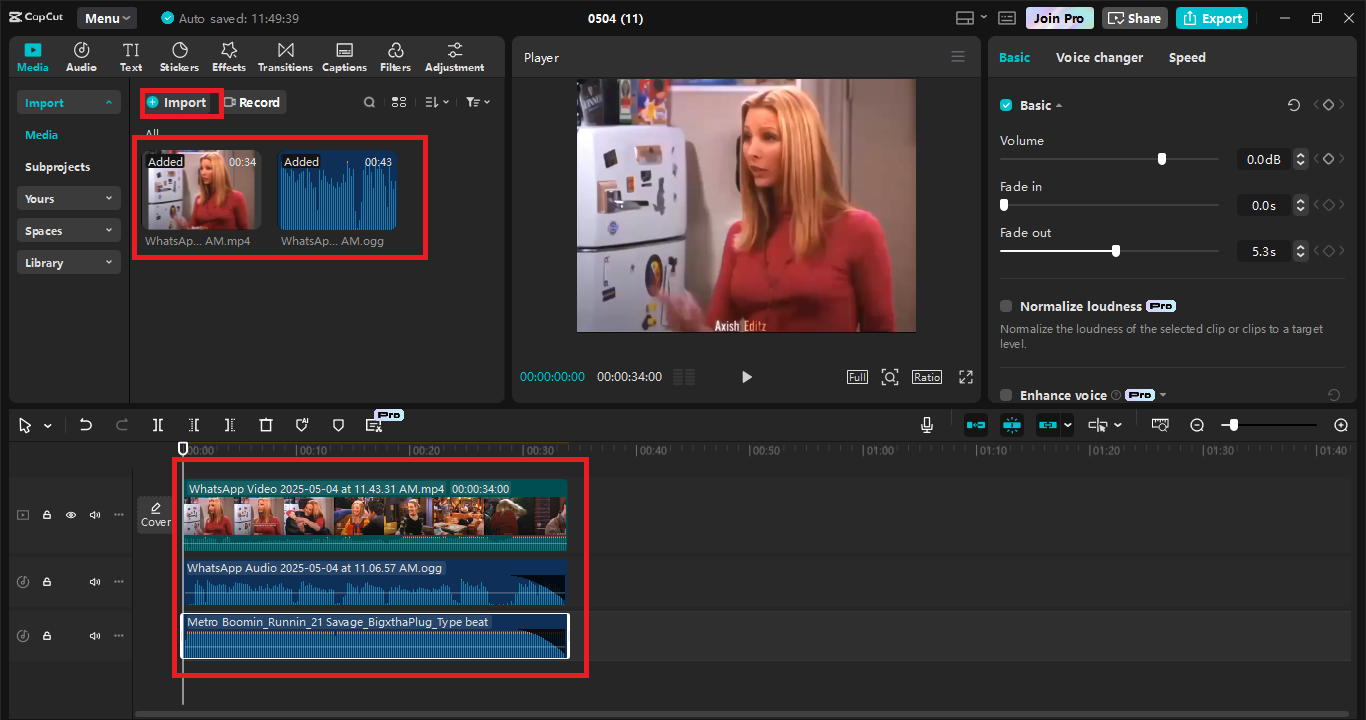
Step 2: Put Music Volume in the Background, Not in Competition
Now that your tracks are laid out, it’s time to level the audio. Select the music track and reduce its volume by adjusting the volume slider in the editing panel or by dragging the volume line on the timeline. As a general rule, music beneath voice-overs should be roughly 10–20% of its original level. You want the music to be audible, but not too loud—a background and not a focus-getter. Watch your video from the beginning and listen attentively. If you find yourself turning up loud to hear the voice, turn the music down again. CapCut also gives you the real-time preview option, which allows you to make volume decisions naturally. Less is more in background sound.
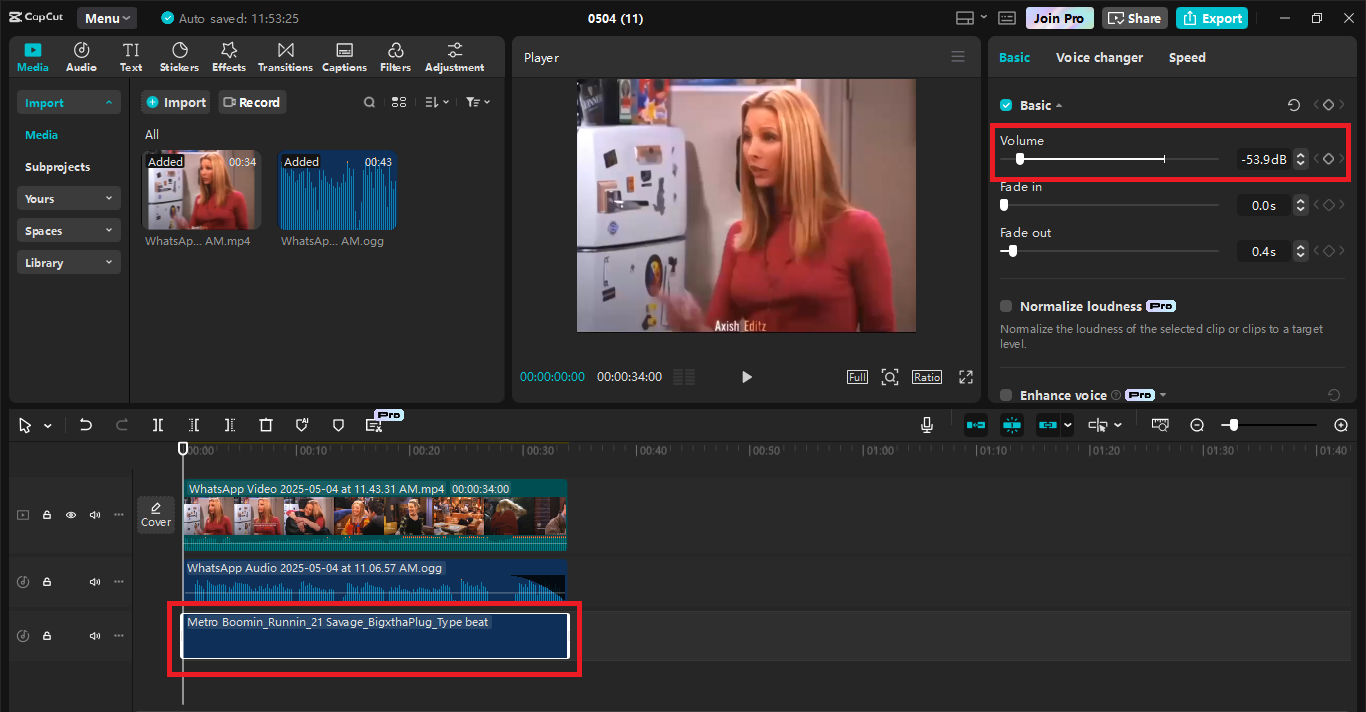
Step 3: Control Volume Dynamically Using Keyframes
One of the strongest audio mixing features in CapCut Desktop is its keyframe tool. Keyframes enable you to make dynamic volume changes over time. As an example, you can drop the music just before the voiceover begins and lift it slightly at a gap or transition. To achieve this, click on the music track, then add keyframes at the locations where you would like the volume to change. You can then drag the volume line up or down between keyframes to create a swell or fade. This is especially helpful in videos of variable dialogue, such as interviews, commentary, or narration, where you wouldn’t like the background music to be at one level all the time.
Step 4: Use Audio Fades to Create Smooth Transitions
Rapid music starts and stops are jarring, particularly when combined with voiceover. CapCut has introduced fade-in and fade-out controls to reduce these jarring transitions. Choose the music clip, proceed to the “Fade” tab, and specify the fade-in and fade-out time as desired. This brings your music in and out smoothly, making it easier for the viewer to come in and out of each scene. Likewise, if you recorded your voiceover in pieces, utilize audio fades to remove jarring breaks between them. Smooth sound flow makes it possible for a much more professional and enjoyable viewing experience. If you want to add a creative twist to your narration, CapCut also includes a voice changer feature, useful for character-driven content or themed storytelling.
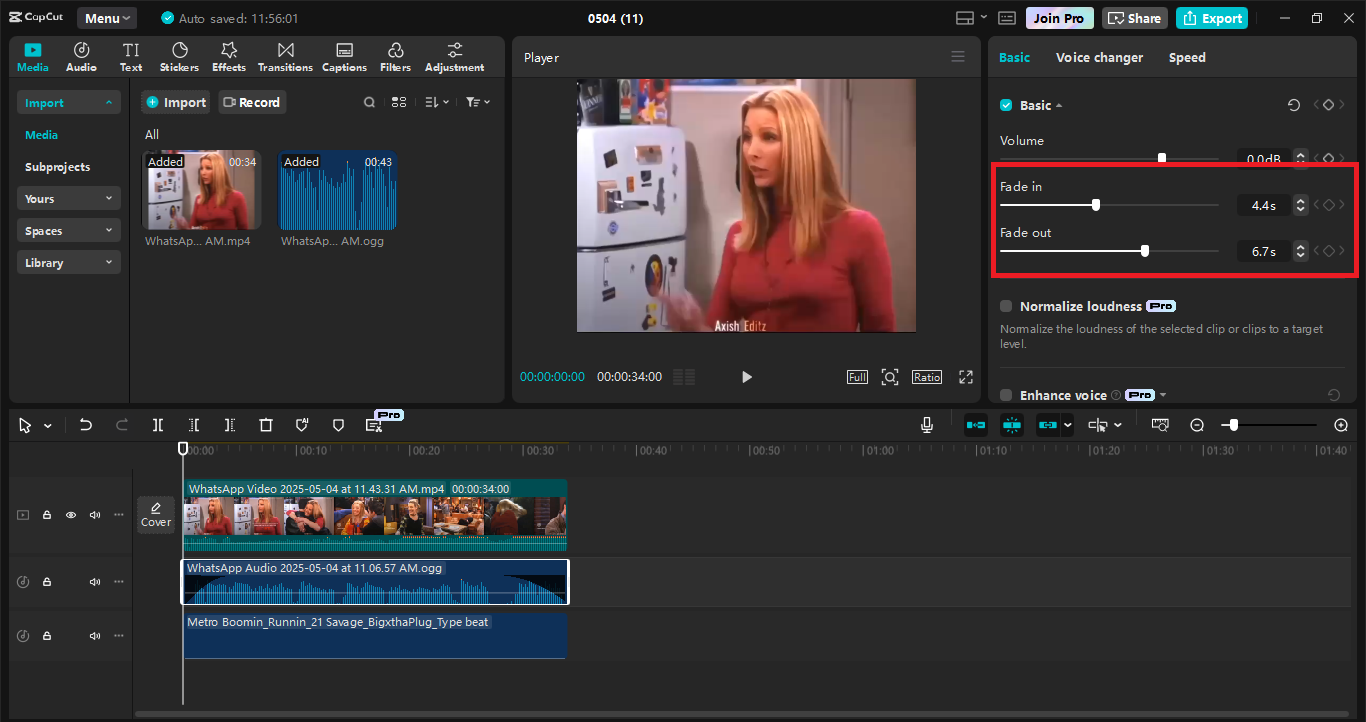
Step 5: Check Whole Mix and Export with Best Settings
With your music and voice tracks balanced and dynamic, the final thing to do now is to listen to the entire project start to finish. If you’ve got good headphones, use them, and listen for where the voice is lost or where the music is too hollow. Listen for transitions, dialogue clarity, and emotional rhythm. Make subtle volume adjustments or add more keyframes if necessary.
When satisfied, go to the export settings and choose the format most suited to your platform (e.g., MP4 in 1080p for YouTube, vertical 720p for Instagram Reels). CapCut does allow you to export in various bitrates, so choose a higher audio bitrate (such as 320kbps) if you wish to have the best sound quality.
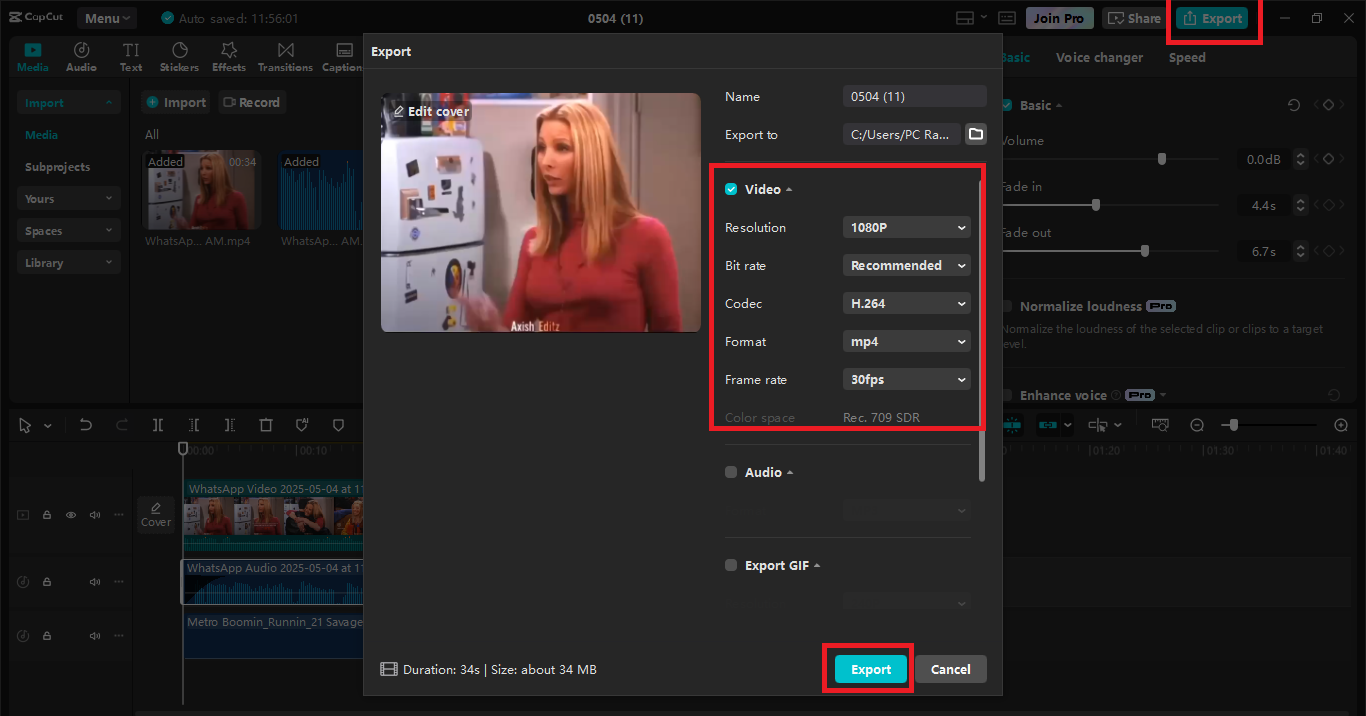
Final Thoughts
Mastering the art of mixing background tracks and voice tracks is, in my opinion, the most essential audio editing skill you can acquire as a video maker. It’s more about dictating the emotional journey, highlighting important information, and drawing in your listeners from beginning to end. CapCut Desktop’s user-friendly interface and robust features make all this a breeze like never before.

